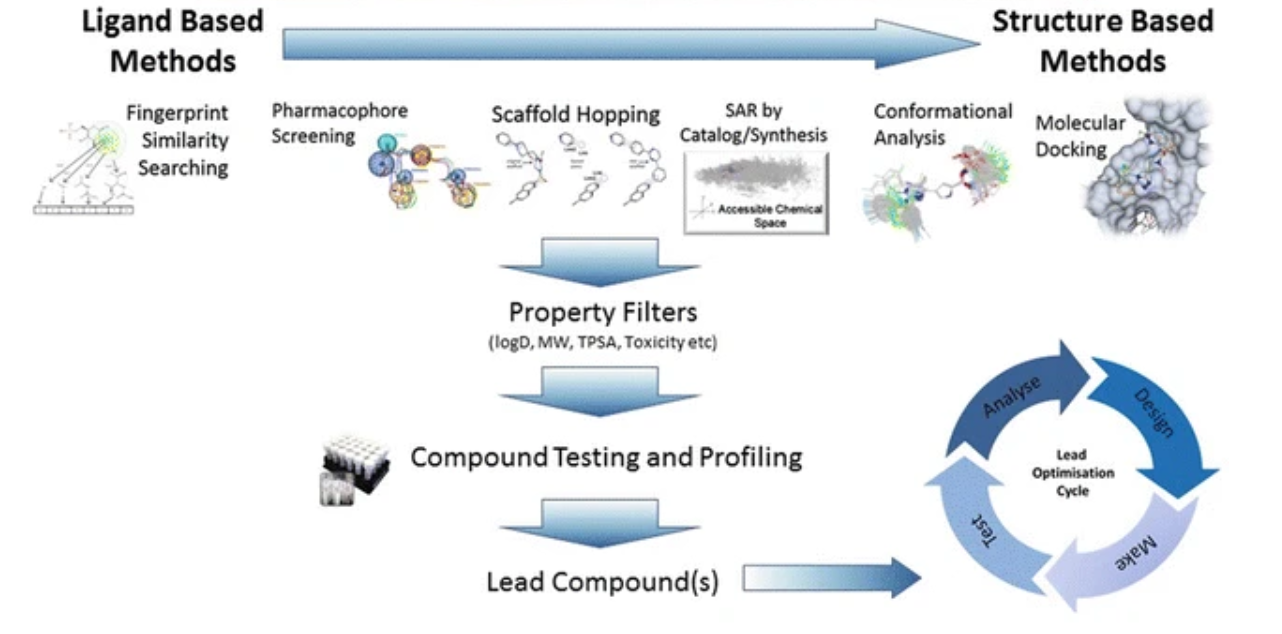Hit-to-Lead Identification Service | Drug Discovery
- Improving binding affinity and target selectivity
- Evaluating structure–activity relationships (SAR)
- Enhancing metabolic stability and solubility
- Reducing off-target effects and liabilities
- Prioritizing hits based on medicinal chemistry feasibility
The transition from initial hit discovery to the development of high-quality lead compounds is a critical inflection point in early drug development. This stage, known as Hit-to-Lead (H2L) identification, involves the systematic evaluation, optimization, and prioritization of confirmed hit compounds to identify those with the strongest potential for advancement into preclinical candidates. To support this essential phase of drug discovery, MtoZ Biolabs offers a dedicated Hit-to-Lead Identification Service designed to accelerate the progression of validated hits into well-characterized lead compounds.
In early-stage drug discovery, a hit refers to a chemical compound that exhibits measurable biological activity against a target of interest, typically identified through high-throughput screening(HTS), virtual screening, or fragment-based screening. While hits represent molecules that show initial biological activity, they often lack sufficient potency, selectivity, pharmacokinetic (PK) properties, or structural tractability for further development. A lead compound, by contrast, represents a more advanced molecule that combines confirmed biological activity with favorable drug-like characteristics, making it suitable for preclinical evaluation.
Hit-to-lead identification involves the iterative refinement of hit compounds to improve their pharmacological, physicochemical, and safety profiles. Through careful analog design, biological testing, and early ADME (Absorption, Distribution, Metabolism, and Excretion) screening, this phase helps prioritize compounds with the highest potential to succeed in preclinical development.
Key objectives of this stage include:
Service at MtoZ Biolabs
MtoZ Biolabs' integrated Hit-to-Lead Identification Service combines medicinal chemistry, structural biology, high-content screening, and in vitro ADME profiling. Our multidisciplinary team works closely with clients to transform promising hits into optimized leads with drug-like properties. This progression lays the foundation for IND-enabling studies and future clinical development.
Analysis Workflow
1. Hit Identification
We begin by selecting validated hits from prior high-throughput screening campaigns, fragment-based discovery, or phenotypic assays. These hits may be known bioactive compounds or novel structures with initial target activity.
2. Hit Confirmation
Selected hits are re-evaluated using orthogonal assays (e.g., SPR, DSF, ITC, NMR) to confirm binding, rule out assay interference, and assess preliminary structure–activity relationships (SAR).
3. Lead Generation
Confirmed hits are chemically modified to generate analog series. Focus is placed on improving potency, selectivity, and chemical tractability, with attention to scaffold stability and synthetic feasibility.
4. Biological Evaluation
All designed analogs undergo rigorous in vivo and in vitro testing to assess target engagement, off-target effects, and cytotoxicity.
5. Optimization and Refinement
We employ iterative DMTA (Design–Make–Test–Analyze) cycles to systematically enhance key properties including solubility, metabolic stability, permeability, and toxicity. Medicinal chemistry and data-driven feedback guide each design round.
6. Candidate Selection
Compounds with favorable activity, ADME profiles, and developability characteristics are ranked and reviewed. The most promising leads are selected for nomination into preclinical development pipelines.

Figure 1. Optimization Cycle for Hit-to-Lead
Service Advantages
1. Advanced Analysis Platform: MtoZ Biolabs established an advanced Hit-to-Lead Identification Service platform, guaranteeing reliable, fast, and highly accurate analysis service.
2. One-Time-Charge: Our pricing is transparent, no hidden fees or additional costs.
3. High-Data-Quality: Deep data coverage with strict data quality control. AI-powered bioinformatics platform integrates all Hit-to-Lead Identification data, providing clients with a comprehensive data report.
Deliverables
1. Comprehensive Experimental Details (Materials, Instruments, and Methods)
2. Raw and Processed Data Files
3. Screening Results and SAR Summary
4. ADME Properties and Early Safety Profiles
5. Hit Prioritization and Lead Selection Rationale
6. Final Report and Next-Step Recommendations
Related Services
High Throughput Drug Discovery Service
How to order?







